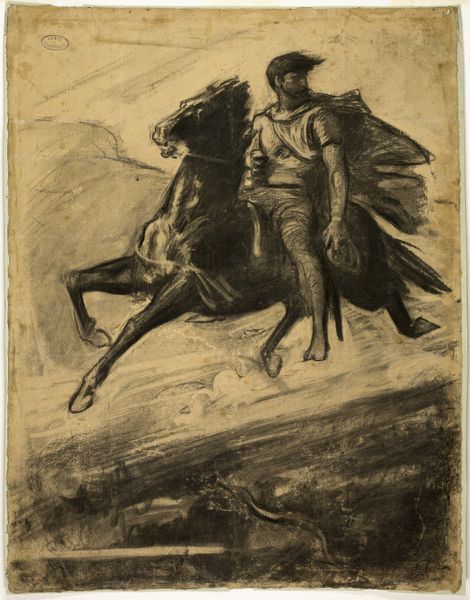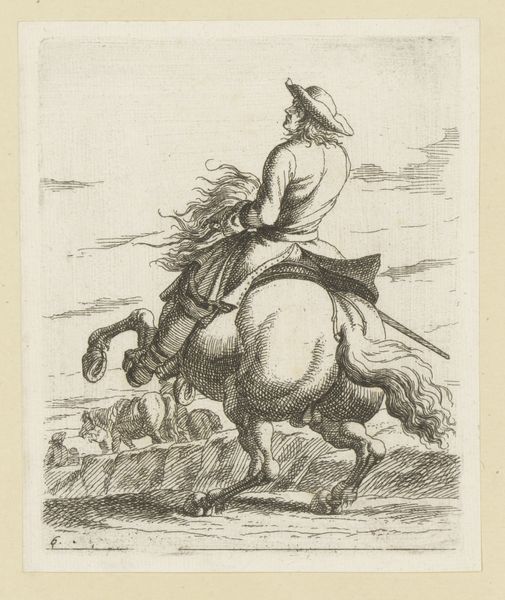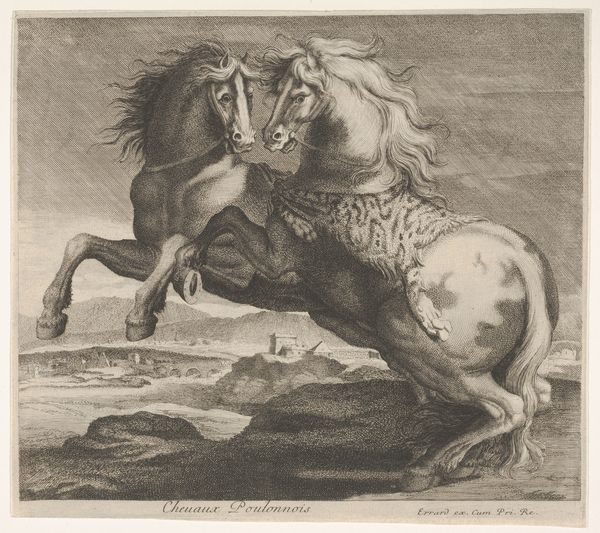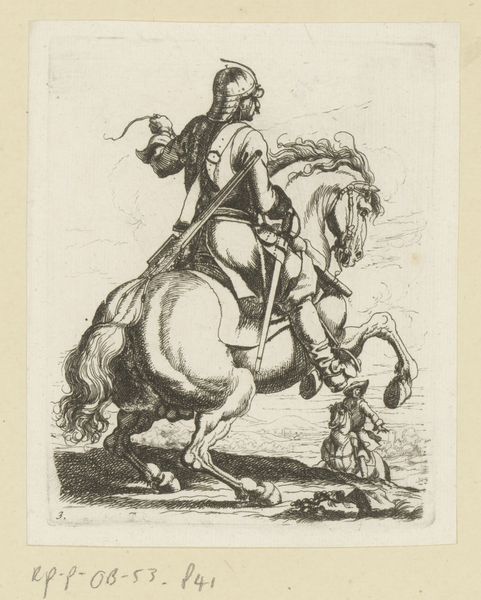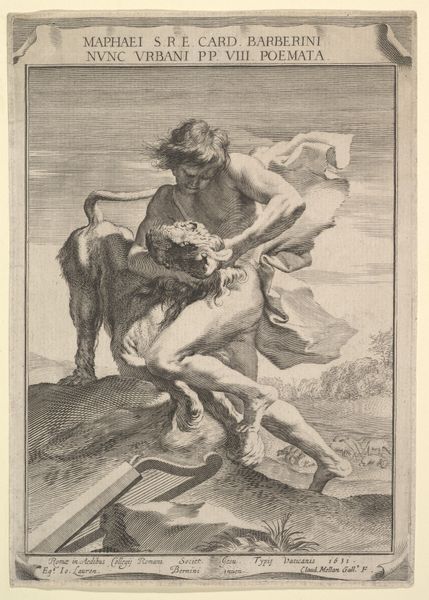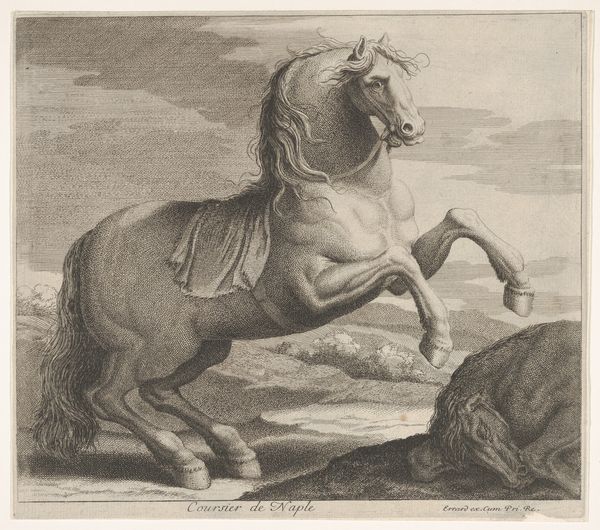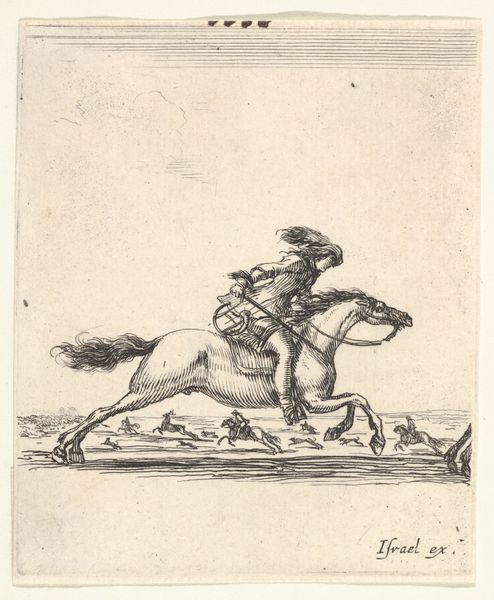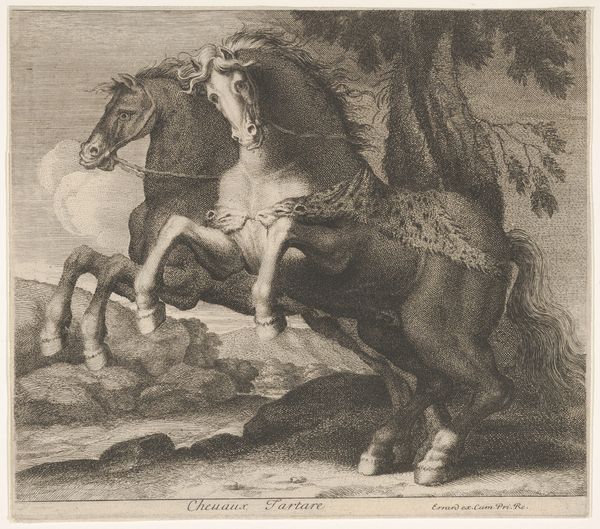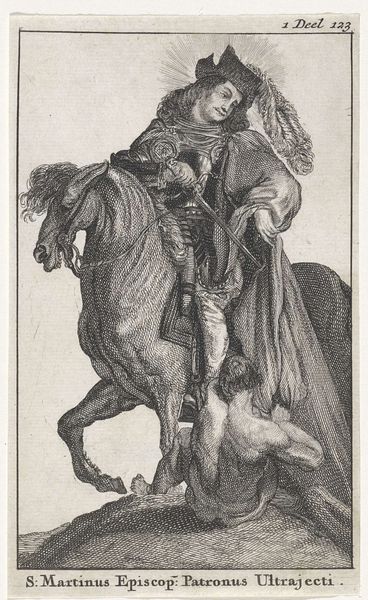
drawing, print, engraving
#
drawing
# print
#
landscape
#
figuration
#
11_renaissance
#
horse
#
line
#
history-painting
#
italian-renaissance
#
engraving
Dimensions: Mount: 12 11/16 in. × 10 7/16 in. (32.3 × 26.5 cm) Sheet: 9 1/16 × 7 5/16 in. (23 × 18.5 cm)
Copyright: Public Domain
Editor: Here we have Nicolò Boldrini’s “Leaping Horseman (Marcus Curtius),” an engraving dating from sometime between 1555 and 1565. It feels so dynamic; the horse is practically bursting off the page! What story do you think Boldrini is trying to tell? Curator: That dynamism you're picking up on speaks to the socio-political currents of the time. During the Renaissance, prints like this one served a vital function. They weren't just art objects; they were a primary form of visual communication. Think of them as the newspapers of their day, circulating classical stories and ideals, like that of Marcus Curtius. Editor: Ah, so this image refers to a specific historical event? Curator: Exactly! The story goes that Marcus Curtius, a Roman soldier, sacrificed himself by riding his horse into a chasm to save Rome. These prints allowed a wider audience to access and contemplate classical heroism and civic virtue, ideas championed by the ruling class. Do you see how Boldrini's stylized landscape and the dramatic pose enhance the narrative? Editor: I do. The landscape seems almost secondary, like a stage for the heroic act. Did the average person seeing this back then recognize the Marcus Curtius story? Curator: Some likely did, especially within educated circles. But even for those unfamiliar with the specifics, the print would have conveyed a sense of grandeur and the importance of self-sacrifice for the greater good – values promoted by the elite. What does the circulation of imagery like this suggest about the public role of art? Editor: It shows that art isn’t created in a bubble. Even then, art served specific social functions. That’s fascinating! I initially just saw an impressive horse, but there's a whole world of historical and political context embedded within the image. Curator: Precisely. It reminds us to look beyond the surface and consider the societal forces that shaped its creation and reception.
Comments
No comments
Be the first to comment and join the conversation on the ultimate creative platform.


